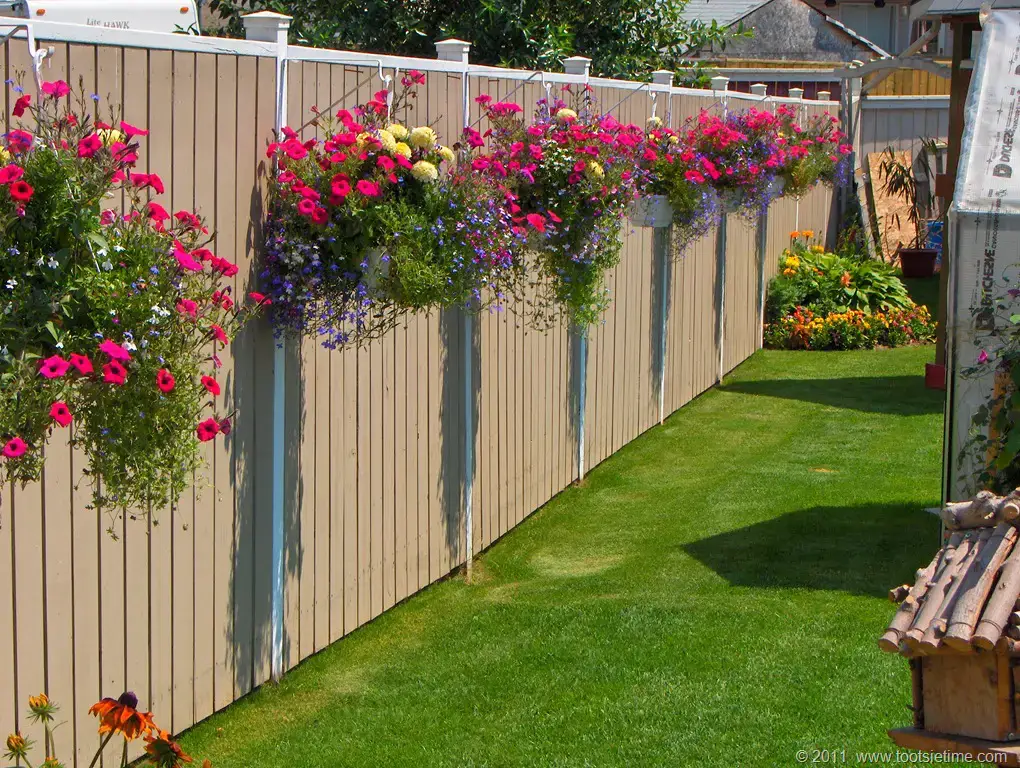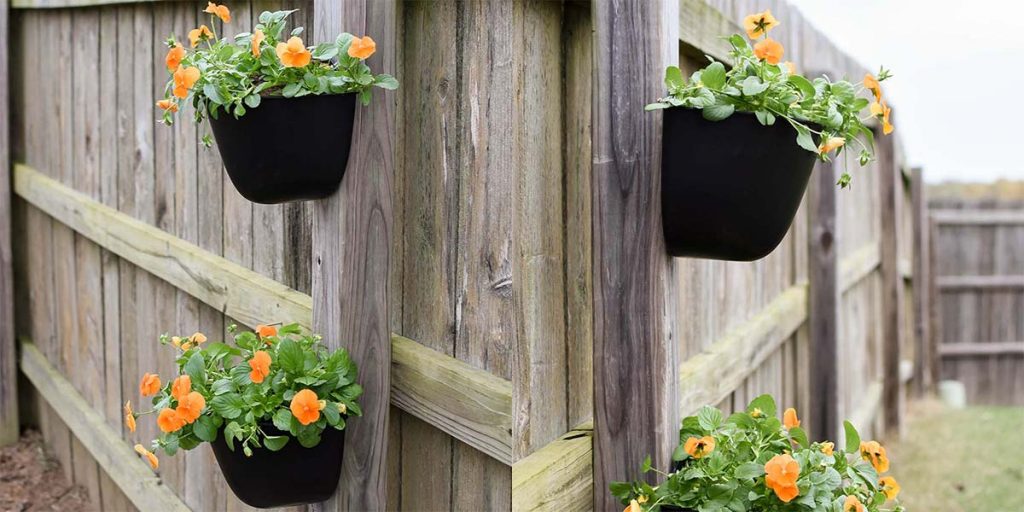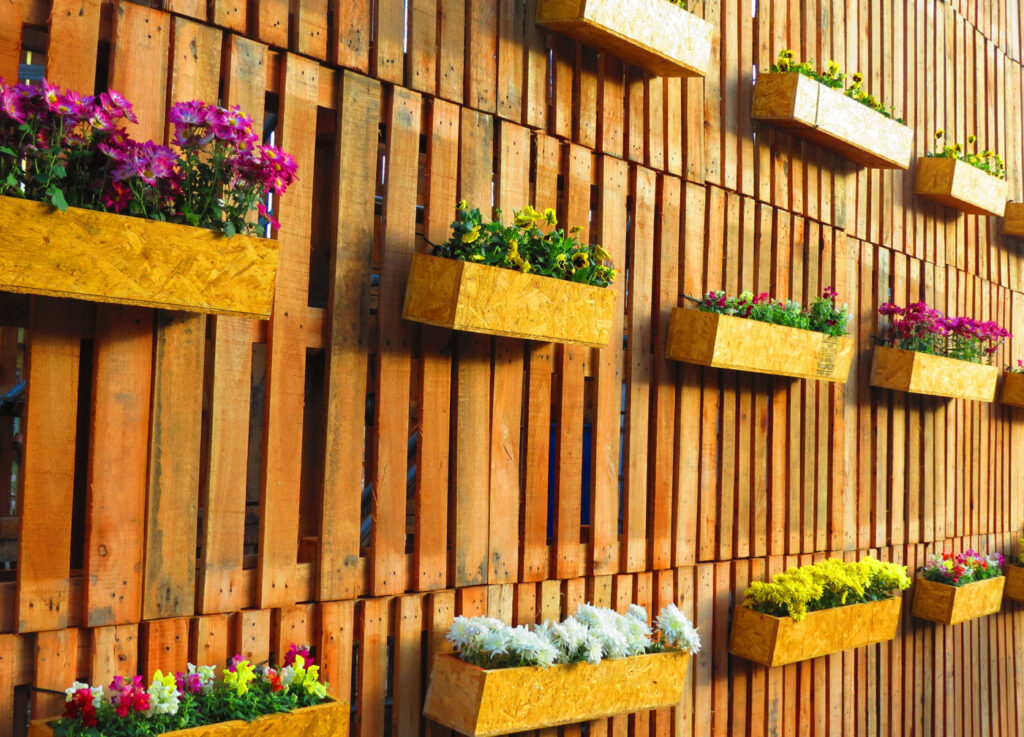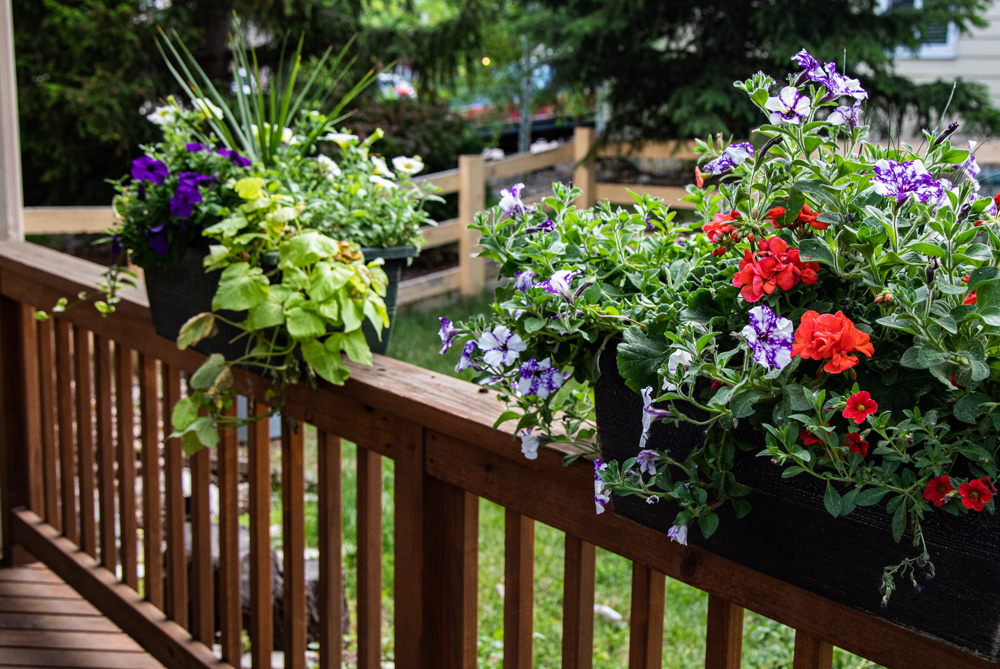Have you ever thought about adding planters to your fence? It’s a unique and fun way to enhance the aesthetic appeal of your outdoor space. Not only do planters add a touch of natural beauty, but they also offer a range of benefits that you may not have considered. In this article, we’ll dive into the advantages of adding planters to your fence and explore how they can transform your space into a vibrant and inviting oasis. Whether you have a wooden, metal, or vinyl fence, planters can be a versatile addition that brings life and color to your surroundings.
By incorporating planters into your fence, you can take advantage of vertical gardening. This is especially beneficial if you have limited yard space or want to maximize your gardening potential. With planters, you can grow a variety of plants, from flowers to herbs and even vegetables, without taking up valuable ground space. Not only does this make your fence an attractive focal point, but it also provides you with easy access to fresh herbs or a beautiful display of colorful blooms. Plus, the added greenery can help to create a calming and peaceful atmosphere in your outdoor area. Stay tuned for our upcoming blog post where we’ll delve deeper into the benefits of adding planters to your fence and give you tips on how to get started with this delightful project.

The Benefits of Adding Planters to Your Fence
Are you looking to enhance the aesthetic appeal of your fence? Want to create a green and natural ambience in your outdoor space? Or perhaps you’re interested in increasing privacy and security around your property? Look no further – adding planters to your fence can help you achieve all of these goals and more. In this article, we’ll explore the numerous benefits of incorporating planters into your fence design and provide you with useful tips for choosing the right planters, selecting suitable plants, and maintaining your fence planters.
Enhancing the Aesthetic Appeal of Your Fence
One of the most significant benefits of adding planters to your fence is the visual enhancement they provide. With the right planters and carefully chosen plants, you can transform a plain and dull fence into a vibrant and eye-catching feature of your outdoor space. Whether you opt for sleek and modern planters, rustic and vintage-inspired designs, or whimsical and creative containers, the choices are endless. By incorporating planters into your fence design, you can customize the look and feel of your fence to match your personal style and preferences.
Creating a Green and Natural Ambience
Another major advantage of fence planters is their ability to create a green and natural ambience in your outdoor space. By adding plants to your fence, you introduce a touch of nature and freshness to your surroundings. This can make your outdoor area feel more inviting, cozy, and relaxing. Whether you choose vibrant flowering plants, durable evergreen shrubs, or climbing vines and ivy, the greenery will bring life to your fence and make your outdoor space feel more vibrant and alive.
Increasing Privacy and Security
If privacy and security are a concern for you, fence planters can serve as an effective solution. By strategically placing taller planters along your fence line, you can create a natural privacy barrier that shields your property from prying eyes. Additionally, the presence of planters can act as a deterrent for potential intruders, as they add an extra obstacle and make it more difficult to access your property. With the right choice of plants and planters, you can enhance the privacy and security of your outdoor space while still enjoying the benefits of a greener environment.
Choosing the Right Planters for Your Fence
Now that you’re aware of the benefits of adding planters to your fence, it’s important to choose the right ones that suit your needs and preferences. Here are some factors to consider when selecting the perfect planters for your fence:
Consider the Material of the Planter
The material of the planter plays a significant role in its durability and appearance. Common materials for fence planters include wood, plastic, metal, and ceramic. Each material has its pros and cons, so it’s essential to choose one that matches your desired aesthetic and can withstand the outdoor elements. For a natural and rustic look, wooden planters are an excellent choice. Alternatively, if you prefer a more modern and sleek appearance, metal or ceramic planters might be more suitable.
Selecting the Appropriate Size and Shape
The size and shape of your planters will depend on the available space on your fence and the type of plants you wish to grow. Smaller, compact planters are ideal for herbs, smaller flowers, and succulents, while larger ones can accommodate shrubs and climbing plants. The shape of the planter can also contribute to the overall aesthetics of your fence. Round and cylindrical planters provide a classic look, while square and rectangular ones offer a more contemporary feel. Consider the dimensions of your fence and the visual impact you want to achieve when selecting the size and shape of your planters.
Matching the Style of Your Fence
To create a cohesive and harmonious look, aim to match the style of your planters with that of your fence. If you have a traditional wooden fence, consider opting for wooden or woven planters to maintain a consistent theme. For a modern or industrial-style fence, metal or concrete planters can complement the overall design. The key is to ensure that the planters and fence work together to create a cohesive and visually pleasing outdoor space.

Types of Plants Suitable for Fence Planters
Now that you’ve chosen the perfect planters for your fence, it’s time to decide which plants to include. The type of plants you select will depend on several factors such as your climate, sunlight exposure, and personal preferences. Here are some popular options suitable for fence planters:
Vibrant Flowering Plants
Adding flowering plants to your fence not only enhances its beauty but also attracts pollinators and wildlife to your outdoor space. Consider planting colorful annuals such as petunias, marigolds, or geraniums for a splash of vibrant hues. Perennial flowers like roses, daylilies, and lavender also provide long-lasting beauty year after year. Be sure to choose plants that thrive in your specific climate and provide the necessary care, such as regular watering and proper pruning, to ensure their health and longevity.
Durable Evergreen Shrubs
If you’re looking for low-maintenance options that provide year-round appeal, evergreen shrubs are an excellent choice. These plants retain their leaves regardless of the season, adding greenery to your fence throughout the year. Popular options include boxwood, holly, juniper, and arborvitae. Evergreen shrubs not only provide a natural privacy barrier but also serve as windbreaks and habitat for birds and small animals. They require minimal pruning and are generally resilient, making them suitable for fence planters.
Climbing Vines and Ivy
For a more vertical and dynamic look, consider incorporating climbing vines and ivy into your fence planters. These plants can add height, texture, and visual interest to your fence while offering natural shade and cover. Common options include clematis, honeysuckle, wisteria, and English ivy. Climbing plants can be trained to grow on trellises or directly on the fence itself. However, it’s essential to monitor their growth and provide support if needed to prevent damage to the fence structure.
Benefits of Adding Flowers to Your Fence
Adding flowers to your fence offers numerous benefits beyond their visual appeal. Let’s explore some of the advantages of incorporating flowers into your fence planters:
Adding Color and Beauty to Your Outdoor Space
Flowers are nature’s way of adding color, beauty, and joy to our surroundings. By planting vibrant flowers in your fence planters, you can instantly elevate the aesthetics of your outdoor space and create a welcoming and enchanting environment. Whether you opt for a monochromatic color scheme or a mix of various hues, flowers have the power to brighten up your fence and bring life to your outdoor space.
Attracting Pollinators and Wildlife
Flowering plants are essential for attracting pollinators such as bees, butterflies, and hummingbirds. By incorporating these plants into your fence planters, you can create a haven for these beneficial creatures, contributing to the overall ecosystem. Bees and butterflies play a vital role in pollinating plants, ensuring the survival of various species, including food crops. By providing a food source for these pollinators, you actively contribute to biodiversity and help support the local ecosystem.
Improving Air Quality and Reducing Noise
Did you know that plants can act as natural air filters, purifying the air around us? By adding flowers to your fence, you contribute to improving the air quality in your immediate environment. Plants absorb carbon dioxide and release oxygen through photosynthesis, helping to reduce harmful pollutants and toxins. Additionally, dense foliage can act as a barrier that absorbs sound, reducing noise pollution and creating a more peaceful and tranquil outdoor space.

Advantages of Using Shrubs in Fence Planters
Shrubs can offer unique advantages when incorporated into your fence planters. Let’s explore some of the reasons why using shrubs is a popular choice among homeowners:
Creating a Natural Privacy Barrier
One of the main advantages of using shrubs in your fence planters is their ability to create a natural privacy barrier. If you live in an area where neighbors are in close proximity, or if you simply desire more solitude in your outdoor space, evergreen shrubs are an excellent option. With their dense foliage and ability to grow to considerable heights, shrubs can provide a shield that separates your property from the surrounding environment, enhancing your privacy.
Low-Maintenance and Year-Round Appeal
Another advantage of using shrubs is their low-maintenance nature and year-round appeal. Once established, shrubs require minimal care and attention. They are typically more resistant to pests and diseases compared to other types of plants, making them an ideal choice for homeowners looking for hassle-free garden solutions. Additionally, many evergreen shrubs retain their leaves throughout the year, ensuring that your fence planters remain visually appealing even during the winter months.
Providing Habitat for Birds and Small Animals
In addition to enhancing privacy and requiring minimal maintenance, shrubs in fence planters also provide habitat for birds and small animals. Many shrubs produce berries, seeds, or flowers that serve as a food source for wildlife. By incorporating shrubs into your fence design, you can attract a variety of bird species to your outdoor space, adding to the overall ecosystem. Watching birds frequent your fence planters can provide hours of enjoyment and connection to nature.
Utilizing Climbing Vines and Ivy on Your Fence
Climbing vines and ivy offer unique advantages when incorporated into your fence planters. Let’s explore the benefits of utilizing these plants:
Enhancing Vertical Space and Visual Interest
One of the significant advantages of using climbing vines and ivy is their ability to enhance vertical space and add visual interest to your fence. Rather than having a flat and monotonous surface, climbing plants can transform your fence into a three-dimensional living feature. As the vines grow and cling to the fence, they create a lush and textured backdrop that can make your outdoor space feel more vibrant and alive. Additionally, vertical plantings can be an excellent solution for small gardens or areas with limited space.
Creating Natural Shade and Cover
Climbing vines and ivy can also provide natural shade and cover for your outdoor space. By planting these varieties on your fence, you create a cooler and more comfortable environment, especially during hot summer months. The foliage acts as a natural barrier that blocks direct sunlight, reducing the temperature and creating a shaded area for relaxation or outdoor activities. Additionally, the dense foliage can provide visual privacy, shielding your outdoor space from prying eyes.
Increasing Energy Efficiency and Coolness
In addition to creating shade, utilizing climbing vines and ivy on your fence can also contribute to the overall energy efficiency of your property. By reducing direct sunlight on your exterior walls and windows, these plants can help regulate the temperature inside your home or buildings. This can lead to a reduction in energy consumption, as less cooling is required during hot weather. By incorporating climbing plants into your fence planters, you create a cool and comfortable outdoor space while also contributing to more sustainable and eco-friendly practices.

Tips for Properly Maintaining Fence Planters
To ensure the health and longevity of your fence planters, proper maintenance is essential. Here are some tips to help you keep your fence planters in excellent condition:
Watering and Fertilizing Guidelines
Watering is crucial for the health of your plants, including those in your fence planters. Ensure that your planters have adequate drainage holes to prevent water from pooling and causing root rot. Regularly check the moisture level of the soil and water accordingly, being mindful not to overwater or underwater your plants. Fertilize your plants with suitable nutrients at appropriate intervals to encourage healthy growth. Consider using organic fertilizers for a more eco-friendly approach.
Pruning and Trimming Techniques
Pruning and trimming are necessary to maintain the shape, size, and health of your plants. Regularly inspect your fence planters and remove any dead or diseased plant parts to prevent the spread of diseases or pest infestations. Prune back overgrown branches or vines to maintain a neat and tidy appearance. Research specific pruning techniques for each plant variety to ensure you’re following proper guidelines and not inadvertently harming your plants.
Preventing Pest Infestations
Pests can pose a threat to the health and appearance of your plants. Regularly inspect your fence planters for signs of common garden pests such as aphids, mealybugs, or spider mites. If detected, use organic pest control methods, such as introducing beneficial insects or using natural insecticidal soaps, to address the issue. Regularly cleaning your planters and removing any debris can also help prevent pest infestations by eliminating potential hiding places for pests.
DIY Fence Planter Ideas
If you have a creative streak and enjoy hands-on projects, consider these DIY fence planter ideas to personalize your outdoor space:
Upcycling Old Containers into Planters
Look around your home for unused containers or items that can be repurposed into unique planters. Old wooden crates, mason jars, or even discarded kitchen utensils can be transformed into charming and eclectic fence planters. Use your imagination and experiment with different materials and combinations to create a personalized and environmentally friendly display.
Creating Hanging Fence Planters
Hanging planters can add a touch of elegance and vertical dimension to your fence. Consider attaching hooks or brackets on your fence and hang lightweight planters filled with trailing flowers or cascading vines. This not only maximizes your fence space but also creates a dynamic visual effect.
Building Custom Planter Boxes
If you have basic carpentry skills, building custom planter boxes can be a rewarding DIY project. Measure your fence length and design planter boxes that fit seamlessly along the top or bottom of your fence. Custom-built planter boxes offer the advantage of precise sizing and can be tailored to your specific preferences and needs.

Safety Considerations for Fence Planters
While adding planters to your fence can be visually appealing and beneficial, it’s important to ensure safety considerations are met. Here are some points to keep in mind:
Avoiding Toxic Plants and Harmful Substances
When selecting plants for your fence planters, it’s crucial to avoid toxic or harmful plant varieties, especially if you have children or pets. Research each plant’s toxicity level and ensure they are not a threat to human or animal health. Additionally, be cautious when using fertilizers or pesticides, opting for organic and non-toxic options to prevent accidental exposure or contamination.
Preventing Planter Damage to the Fence
To prevent potential damage to your fence, consider using planter liners or inserts to contain the soil and plant roots. This can help minimize moisture seepage onto the fence surface, reducing the risk of wood rot or deterioration. Additionally, regularly inspect your fence for signs of wear and tear, addressing any issues promptly to prevent further damage.
Ensuring Stability and Wind Resistance
Securely attaching the planters to your fence is crucial to ensure stability, especially in windy or stormy conditions. Use sturdy brackets, hooks, or supporting structures to fasten the planters securely. Consider the weight of the planter and choose appropriate attachment methods that can withstand the outdoor elements.
Case Studies: Transforming Fences with Planters
To inspire your own fence planter projects, here are a few case studies highlighting the transformational effects of adding planters to fences:
Before and After: From Plain Fence to Lush Garden
In this case study, a homeowner wanted to transform their plain wooden fence into a vibrant and lush garden feature. By attaching a variety of planters filled with colorful flowers and trailing vines, the fence was completely transformed. The addition of planters added depth and visual interest to the fence, turning it into a living work of art.
Small Balcony Fence Makeover
In an urban setting, a small balcony with a plain metal fence can feel unwelcoming and lack personality. To combat this issue, a balcony owner decided to utilize fence planters to create a green oasis. By carefully selecting compact and cascading plants, the fence was filled with greenery, providing a sense of privacy and tranquility in an otherwise bustling environment.
Vertical Herb Garden on a Picket Fence
A homeowner with limited space in their backyard wanted to grow their own herbs for cooking. Utilizing the picket fence surrounding their garden, they created a vertical herb garden using fence planters. By planting a variety of herbs in each planter, they maximized their planting space while adding a touch of greenery and functionality to their fence.
Research and Studies on the Benefits of Fence Planters
Numerous research and studies have been conducted on the benefits of incorporating planters into fences. Here are some key findings:
Effects of Greenery on Mental Well-being
Research has shown that exposure to green spaces and natural environments has a positive impact on mental well-being. Incorporating planters into fences allows individuals to have easy access to greenery, which can reduce stress levels and improve overall mood and happiness.
Air Pollution Reduction by Fence Planters
Plants have the unique ability to absorb carbon dioxide and release oxygen, improving the air quality around them. Fence planters can contribute to the reduction of air pollution, particularly in urban areas, where green spaces are limited. Studies have shown that a higher concentration of greenery can lower the levels of pollutants in the surrounding air.
The Impact of Planters on Property Value
Adding planters to fences can enhance the curb appeal and overall aesthetics of a property. Research has indicated that homes with well-maintained and visually appealing landscapes, including fence planters, tend to have higher property values. Potential buyers are often drawn to properties that offer beautiful outdoor spaces and greenery.
Inspiring Fence Planter Designs and Styles
When it comes to fence planters, the design possibilities are endless. Here are some popular design styles to consider:
Modern and Minimalistic Planters
For a sleek and contemporary look, opt for modern and minimalistic planters. Clean lines, geometric shapes, and neutral colors can create a sophisticated and refined aesthetic. Metal or concrete planters often lend themselves well to this design style.
Rustic and Vintage-inspired Planters
If you prefer a more casual and charming look, rustic and vintage-inspired planters are a fantastic choice. Think reclaimed wood, galvanized metal, or aged terracotta containers. These planters add a touch of nostalgia and warmth to your fence, evoking a sense of cozy country living.
Creative and Whimsical Designs
For those who want to express their creativity and showcase their individuality, go for creative and whimsical fence planter designs. Think outside the box with unconventional containers such as teapots, birdcages, or colorful upcycled objects. These planters are sure to spark conversations and bring a sense of playfulness to your fence.
Eco-friendly Practices in Fence Gardening
Incorporating eco-friendly practices into your fence gardening endeavors allows you to minimize your environmental impact and contribute to a healthier planet. Here are some tips:
Using Sustainable and Recycled Materials
Choose planters made from sustainable materials such as bamboo, reclaimed wood, or recycled plastic. These materials require fewer resources to produce and reduce waste. Additionally, consider upcycling or repurposing existing materials to create unique and eco-friendly fence planters.
Water Conservation Techniques
Opt for water-efficient irrigation methods such as drip irrigation or installing rainwater collection systems. These techniques minimize water waste and ensure that your plants receive just the right amount of water they need to thrive. Additionally, consider selecting native or drought-resistant plants that can withstand periods of limited water availability.
Composting and Organic Pest Control
Implement composting practices to create nutrient-rich soil for your plants. Composting not only reduces waste but also provides a sustainable and organic way to fertilize your plants. Additionally, use organic pest control methods to minimize the use of chemical pesticides and protect the overall ecosystem.
Conclusion
Incorporating planters into your fence design offers numerous benefits, from enhancing the aesthetic appeal of your outdoor space to providing privacy, security, and environmental advantages. By carefully choosing planters and selecting suitable plants, you can transform your fence into a vibrant and inviting feature. Whether you opt for vibrant flowers, durable shrubs, or climbing vines, the possibilities for creating a greener and more beautiful fence are endless. So why wait? Enhance your fence with the beauty and benefits of planters today.
Expand your knowledge further on fence-related topics with the extensive list of article topics on our website “Fencedude.org.” Our blog covers all aspects of the fence, including installation guides, maintenance tips, and design inspirations. With our liable and informative articles, we aim to answer your questions and provide you with valuable insights into the world of fencing. Explore the various angles and aspects of fences to ensure you have a comprehensive understanding. Be sure to check back regularly as we continuously update our blog with the latest information and trends in the fence industry.